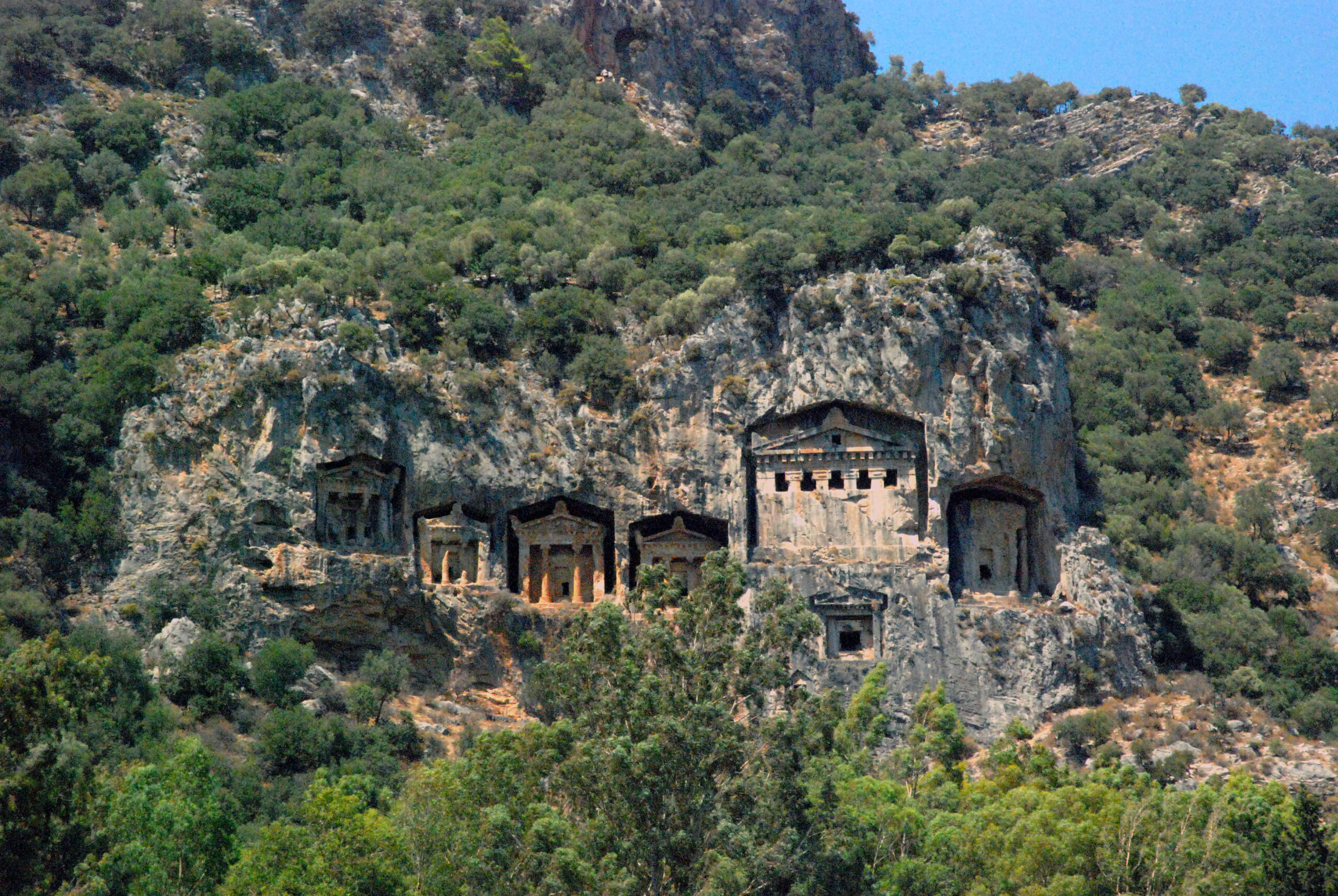Welcome to a new issue of the Journal of Runic Studies, the premier Malkioni publication for studies into the nature of Glorantha. If you haven’t subscribed yet, please consult with the spirit bound to the appropriate electronic page.
God Learner Sorcery
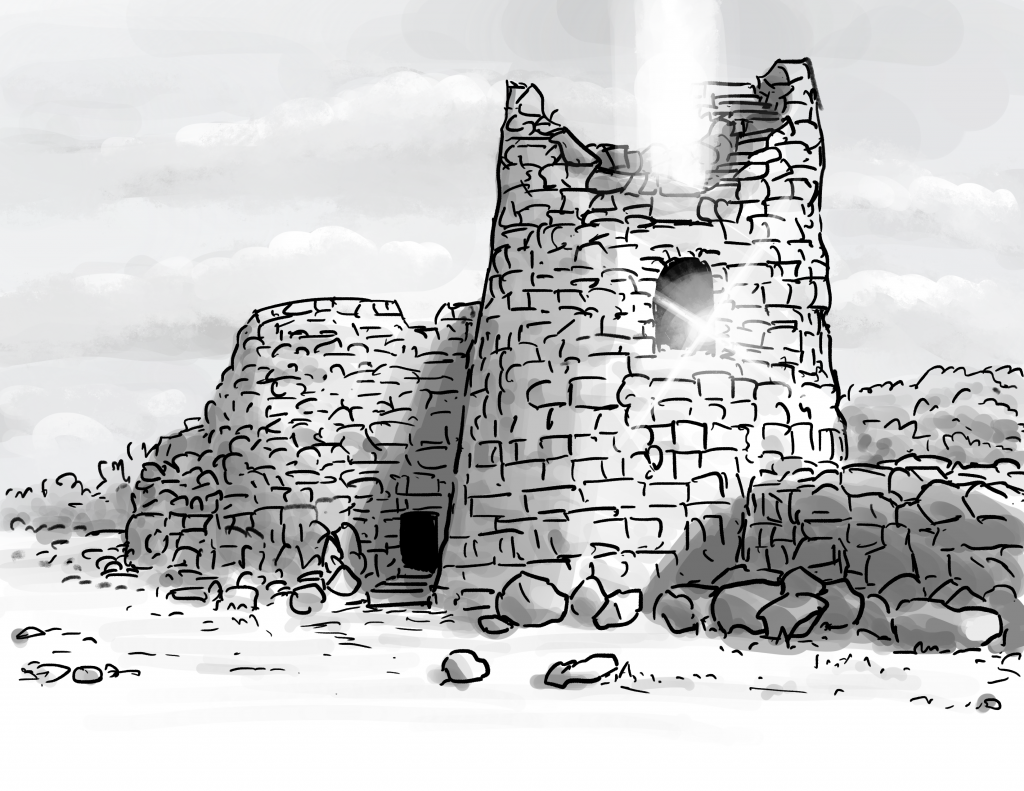
Here is what us God Learners were up to this week.
Episode 21: Gamemastering A New Hero
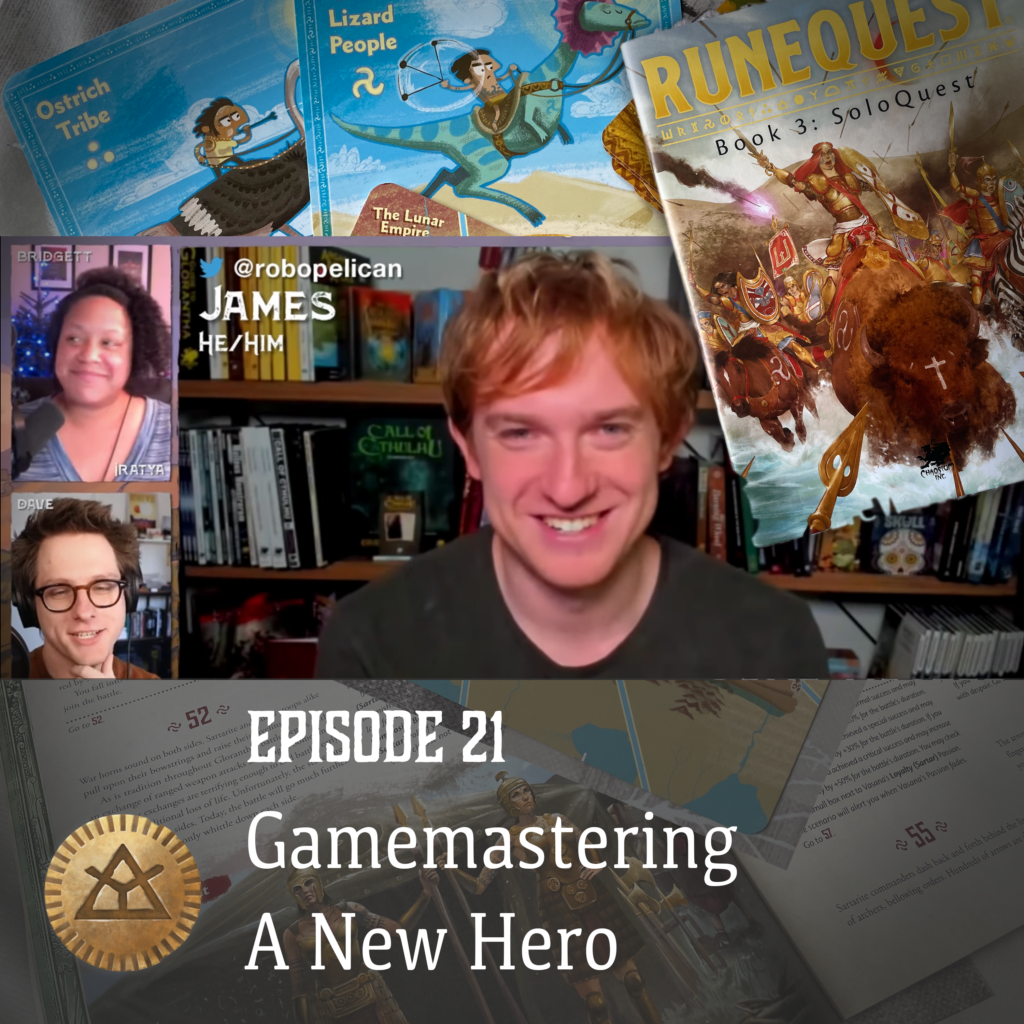
In episode 21 of our podcast, Joerg and I welcome James Coquillat of Chaosium! We chat about his discovery of Glorantha, involvement with the RuneQuest Starter Set, gamemaster duties on the New Hero actual play stream, advice for new RuneQuest gamemasters, and more!
This was a fun episode, and I hope you enjoy listening to it.
Chaosium News

Here are this week’s Chaosium news!
Cover for Cults of RuneQuest: Lightbringers
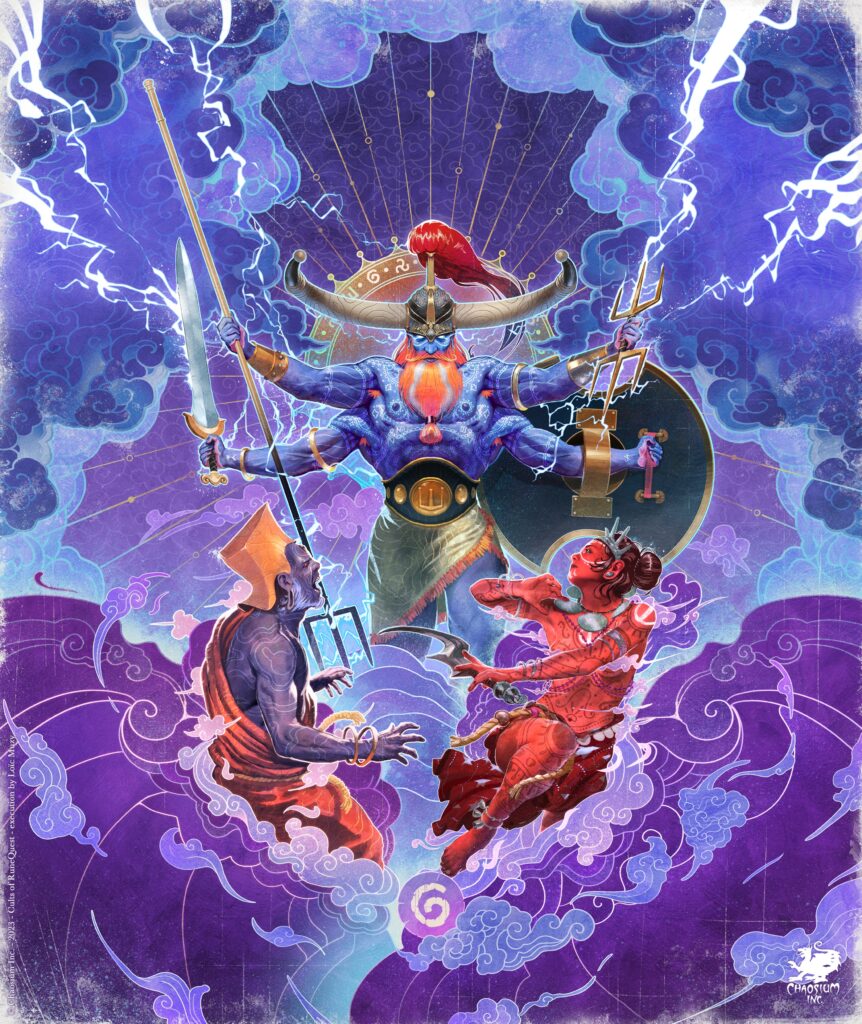
Cults of RuneQuest artist Loic Muzy has shared the awesome cover of the Lightbringers book in all its glory! Not only can you now inspect the details more closely, Loic also confirmed that Austin Conrad was right: this is indeed Orlanth versus the Red Goddess and Nysalor!
Using the Cults Books
This might technically belong to the “Jeff’s Notes” section, but since it deals directly with upcoming Chaosium publications and recent news, I’m moving it here.
Jeff puts the Cults of RuneQuest books in context, in particular:
But [the Cults books] also help to give a better feel for how Glorantha works as a setting. So in Sartar, the Lightbringers and the Earth Goddesses are the most important clusters of cults. But Solar is not insignificant, nor is the Horned Man. In Prax, the Lightbringers, Earth Goddesses, and the Horned Man are probably most important. In Tarsh, the Lunar Way, Lightbringers, and Earth Goddesses are what you want, but in the Lunar Heartlands, you likely want the Lunar Way, the Solar Religion, and maybe Sea Gods (!) (because of Oslira). In Esrolia it is a big mix – buy them all (except Lords of Terror)!
And:
The entire series covers a LOT of ground. […] There is still room for local cults and localised variants to appear in homeland books such as the forthcoming Sartar book, but when complete, this plus the Guide pretty much opens the entire setting.
You can also read Jeff’s comments on the Prosopaedia, the Lightbringers, and the Earth Goddesses books, including some hints as to which cults are in which book. This in particular caught my eye:
Note that terms like Storm Tribe aren’t used.
[…]
[All classic RuneQuest material] refer to the Lightbringers, or less commonly the Orlanthi, as the pantheon headed by Orlanth and his allies. We – Greg and I – decided while working on RQG that those Hero Wars books had gone far astray from what we want, and probably the “Storm Tribe” never should have been called that in the first place that terminology change was confusing and unnecessary.
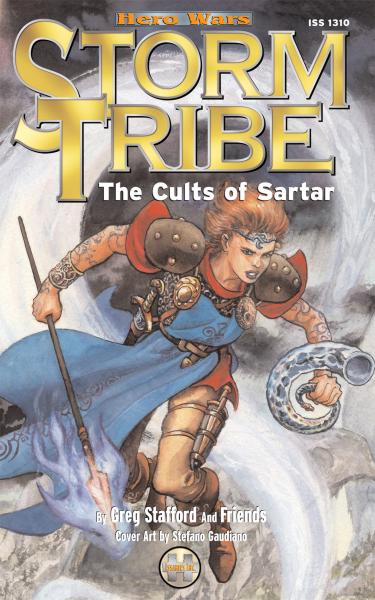
Jeff (and the people asking questions about it) refer to the 2001 book “Storm Tribe” (above) written for the old HeroWars game which became HeroQuest and is now out of print. You’ll find that a lot of Gloranthan fandom parlance comes from these old books, and that it seems hard to shake off…
Publication Schedule
Jeff shared some extra information about how the impending release of the first few Cults books is freeing up the RuneQuest pipeline at Chaosium:
The release of Sartar and Dragon Pass and the rest are freed up by the release of Lightbringers, Earth, and Mythology – all which make those books easier to handle. Sartar and Dragon Pass (which already have all their art) free up Prax, Pavis, and Big Rubble. The Lunar, Solar, Darkness, Horned God, Sea, etc. books all are on their track and not in the same lane for those others. They open up the Dragon Pass Campaign, and others.
In short, we have a metric ton of RQ that gets opened up by this.
But Lightbringers and Earth are foundational for doing more with the Orlanthi.
As I understand this, expect a lot of cross-references from the “homeland books” (Sartar, Prax, etc) to the Cults books. It sounds like Chaosium is offloading a lot of cult-related material to these books, which probably prevents repeating a whole bunch of stuff in subsequent books.
Jonstown Compendium

The Jonstown Compendium is Chaosium’s community content program for all Gloranthan games, hosted on DriveThruRPG. Disclaimer: all the relevant links are affiliate links that hopefully will let us cover some of the hosting and maintenance costs for the website and podcast! Thanks for using them!
RuneQuest’s Healthy Community

Chaosium features Brian Duguid’s words (we had some words with him too on a different topic), as he uses Nick Brooke’s catalogues to gauge how great the RuneQuest creator community is. It’s a nice way to frame the impact of the Jonstown Compendium, and a good reminder to congratulate everybody who managed to get something out.
You can find Nick’s 2022 Catalogue here, and the 2021 edition here.
You can also find my own humble contributions to the Jonstown Compendium here:
- A Short Detour, a moral conundrum complemented by Chaos corruption rules.
- Bog Struggles, in which cute newtlings deal with horrible things.
GM Day Sale on DriveThruRPG

With “GM Day” last Saturday, many online gaming stores are running sales and discounts for the entire week. DriveThruRPG is of course part of this, and that includes many titles from the Jonstown Compendium! If you were on the fence about grabbing some PDFs, now is the time… and yes, my titles (see above) are part of the sale!
Wind Lords and Tula Landmarks
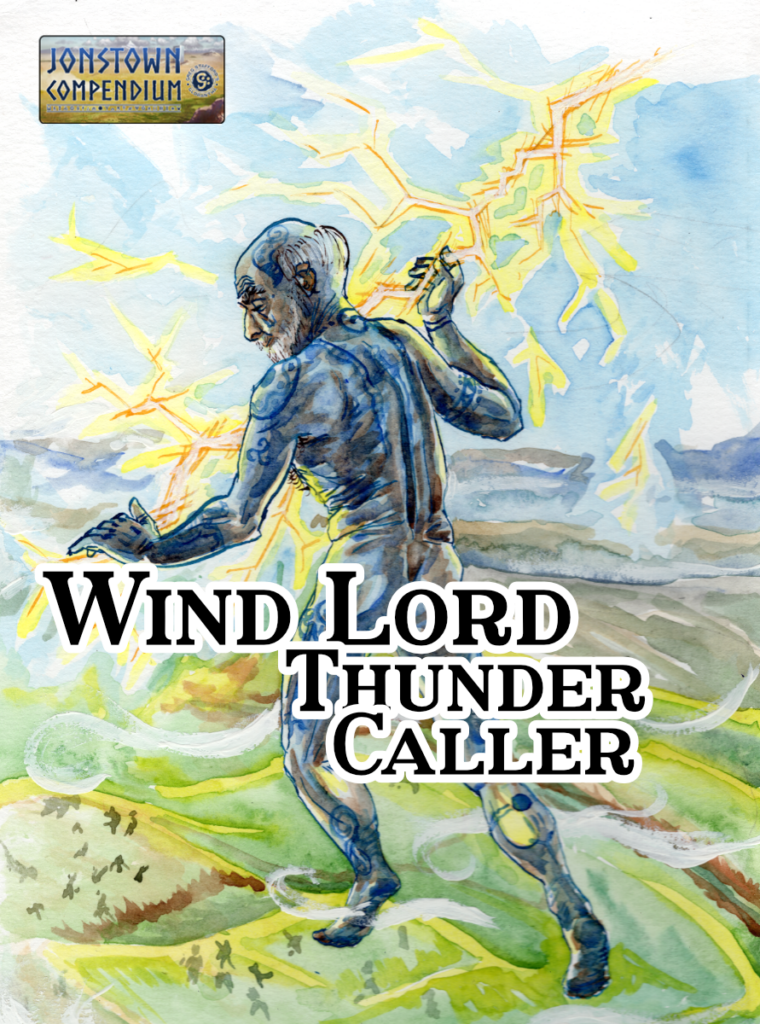

Zed Nope started dropping art assets on the Jonstown Compendium with two illustrations of Wind Lords and some landscape items suitable for your tribal lands (which Gloranthaphiles generally call “tula”, but remember, kids: the term “tula” is nowhere to be found in the RuneQuest Glorantha core books!)
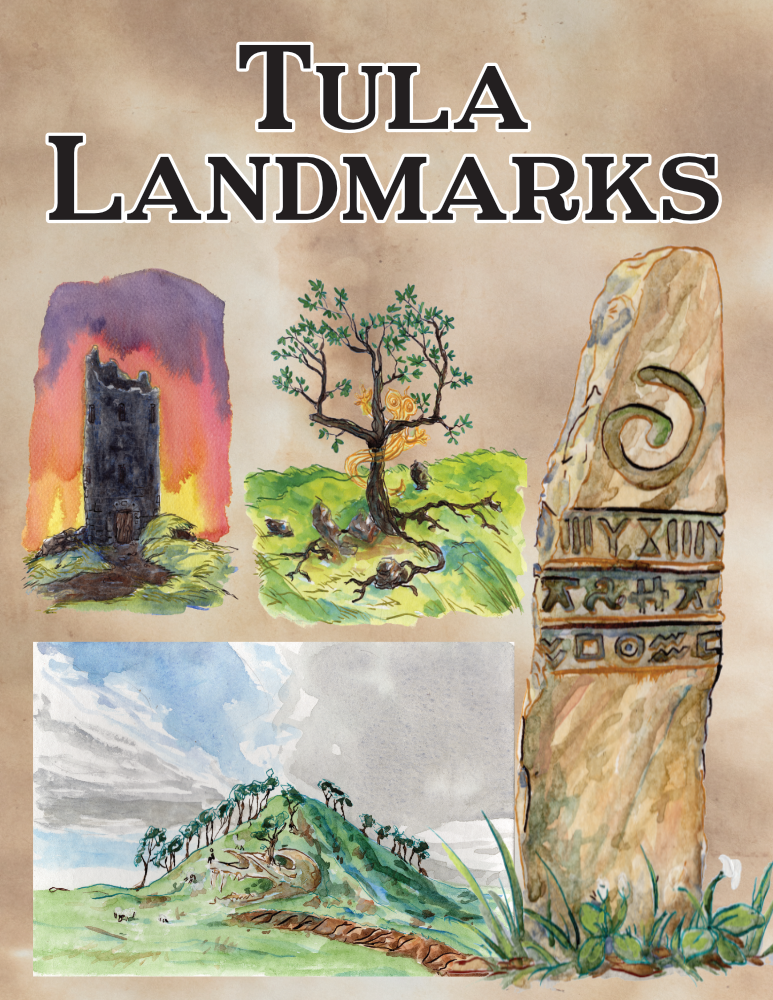
The two Wind Lords include a “Cheerful Vingan” and a “Thunder Caller“. The Tula Landmarks feature the items visible on the cover above. All these assets are available at high-resolution, suitable for both VTT use and inclusion in a Jonstown Compendium publication. You’ll find the terms of use in there.
Elkoi Expansion
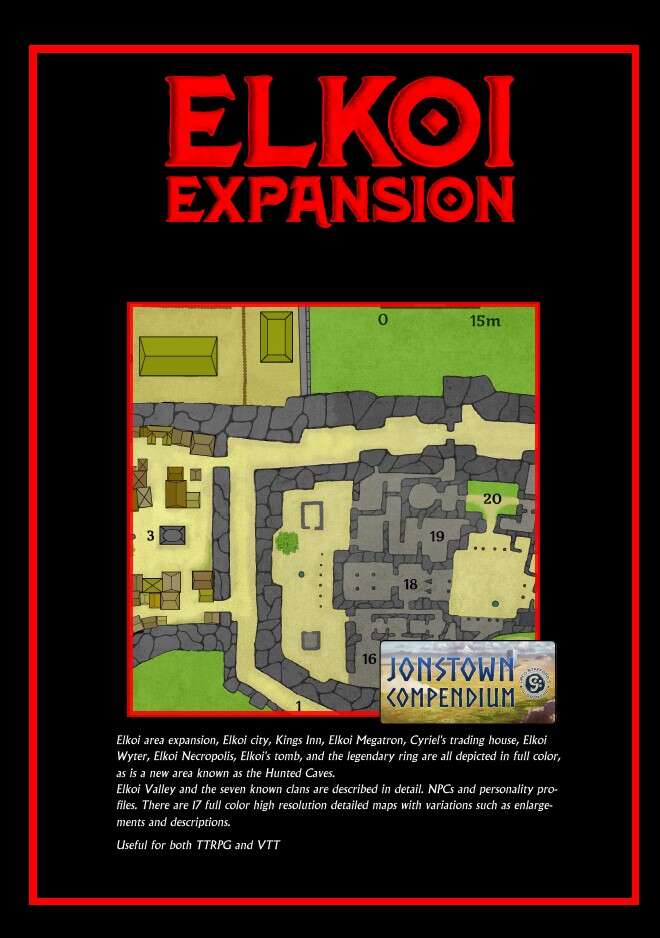
Anders Tonnberg shares a bunch of maps for Elkoi, an ancient citadel in Balazar that the Lunars turned into a military outpost in the mid 1500s. You can read all about it in the classic Griffin Mountain campaign… which means this is a great resource if you plan on running it!
Applefest 2
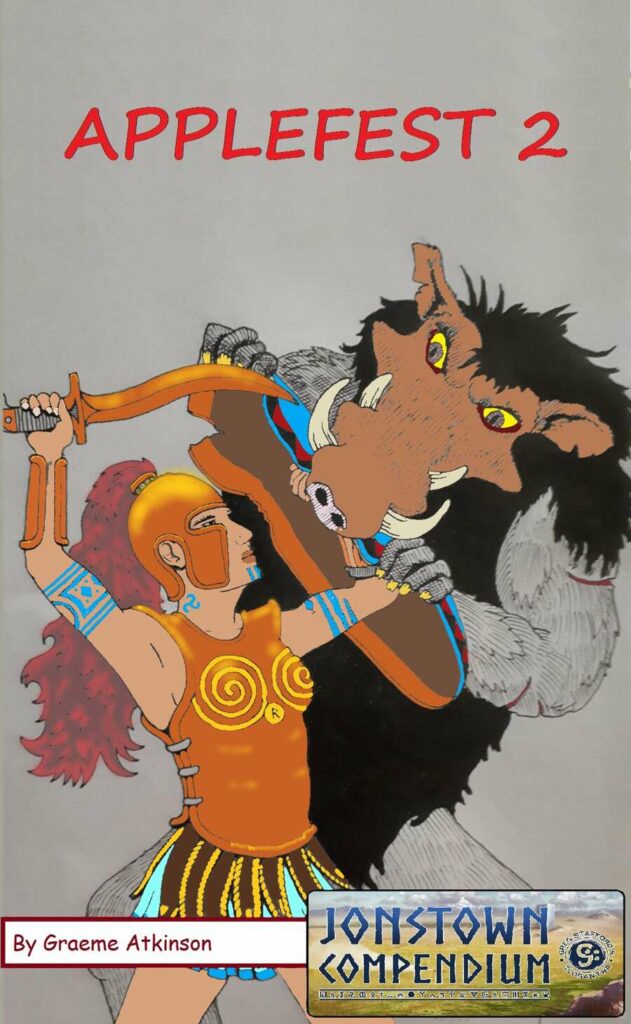
Did you read or run Graeme Atkinson’s Applefest? Well, it looks like the following year’s festival might be as memorable as the last. Applefest 2 features more celebration shenanigans for your adventurers.
Rubble Runners Volume 2 Updated
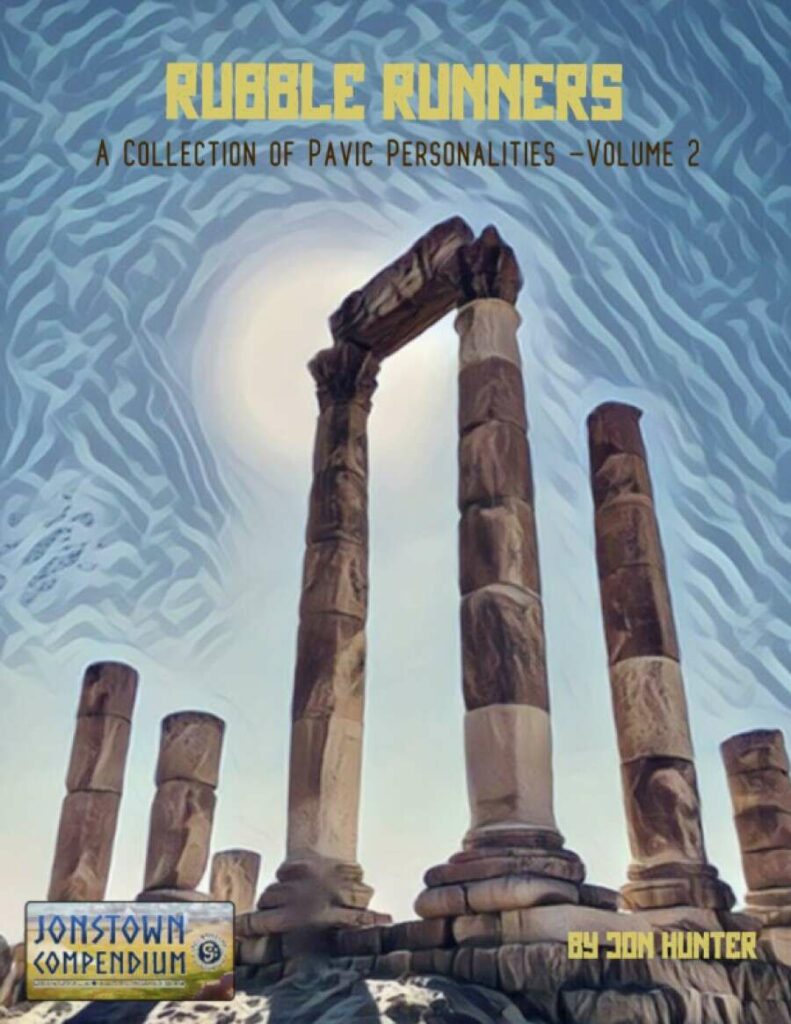
Jon Hunter has added a new character to his collection of NPCs hanging around New Pavis and the Big Rubble… the only problem is that I’m not sure which one is new? Whatever! If you play in Prax, get this book and you’ll have plenty of NPCs, complete with stats and adventure seeds, to use in your game. And it’s currently on sale as part of the aforementioned GM Day!
Jeff’s Notes

Jeff Richard, the current mastermind on everything Gloranthan at Chaosium, is often posting notes and thoughts on the RuneQuest Facebook group. Here’s our curated list from the past week. A partial archive of these sources is compiled on the Well of Daliath.
Chaos Deities
Jeff lists the Chaos deities of Genertela and beyond. Whoever archived this note (probably David Scott) was nice enough to link each deity’s name to their entry in the Well of Daliath prosopaedia, so I don’t need to annotate this: you just need to click the link! I’ll just note that I had never heard of Pocharngo before, and he looks lovely. The “elsewhere” gods are mostly unknown to me to. Oh well, so many new types of bad guys to bring into my game!
Relevant to my interests is a side-note on how all these Chaos deities represent corruption, anti-existence, and the “unnatural”, but the Red Goddess and Nysalor are different:
Perhaps, as the Nysalor cult claims, Chaos truly is not inherently evil, and both Nysalor and the Red Goddess show that. Or perhaps this is just another of Gbaji’s lies, and the followers of Nysalor and the Red Goddess have been deceived. Who knows – ultimately that is up to your campaigns to discover.
Plus, some extra background info on Bagog, the mother of the Scorpion Men. More here.
Praxian Nomad Cults
This note gives a few guidelines for which nomad tribe of Prax has the most of this or that cult. In a nutshell:
- High Llama: most Waha and Eiritha-centric
- Rhinoceros: biggest membership of Storm Bull
- Bison: lots of Humakt, as much as Storm Bull, for which they are second place behind Rhino riders.
- Sable: very little of Orlanth, Humakt, and Storm Bull
- Impala: most Orlanth
- Morokanth: least Eiritha-centric, most Daka-Fal-centric
The Pol Joni are set aside for these rankings, as they have:
Highest Orlanth, Humakt, and Storm Bull percentages. Lowest Eiritha – unless you count the Unicorn Riders or the Zebras.
Cults and Culture
Culture doesn’t just share a linguistic root with cults — it’s literally driven by people’s main cults when it comes to Glorantha and, probably, ancient world-building:
When more than two-thirds of the adult population are initiated into the Orlanth and Ernalda cults as in Sartar, that is going to strongly define their culture. When almost half the adult population is initiated into the Ernalda cult and her immediate household (but less than a fifth are initiated into the Orlanth cult) as in Esrolia, that is also going to strongly define culture.
The Thunder Brothers
Remember how I mentioned earlier that some Glorantha fans have a hard time letting go of the old HeroWars material? Well here’s another such thing: the Thunder Brothers.
In RuneQuest Glorantha, they’re merely described as a pack of special Air spirits (Glorantha Bestiary page 185), and they might be expanded a bit in the Lightbringers Cult book… but back in the olden days they would get names, descriptions, special powers, and individual sub-cults.
Those figures were listed in the HW material, we reduced them in the HQ supplements, and then decided to get rid of them almost entirely in RQ. Hedkoranth makes an appearance in the Prosopaedia and the Sartar Book as a local incarnation of Orlanth Thunderous worshiped at Roundstone Fort, as does Rigsdal (as the personal guardian of Kallyr Starbrow).
For instance, Hedkoranth was described in the old HeroWars books as the “Thunder Slinger”, the god that provided the magic of thunderstones. There was a lot of complicated stuff for moving from one Orlanth “aspect” or “sub-cult” to another as needed, mentions of beard grooming styles, and much miscellaneous cultural and mythological fluff. Some people really appreciated that, I guess, but RuneQuest Glorantha simplifies it a lot to be more accessible.
It’s just assumed that the worship of a god, especially a big one like Orlanth, automatically includes worshipping and sacrificing to various aspects, related deities, heroes, and more. Hedkoranth is the (unnamed) guy that provides the Bless Thunderstone spell (RQG page 322), and we don’t really care exactly how your adventurer gets that spell, just as we don’t care much either what aspect of Orlanth gives you the Flight spell.
But maybe you may want to occasionally name some of these secondary deities, for some flavour bit in an adventure or something. Or maybe you love tedious useless lore. Either way, Jeff provides some thoughts on framing and use the Thunder Brothers:
They are the Airy offspring and brethren of Orlanth, who can split the clouds so that rain can fall, shake mountains and destroy forests. They are collective of some three to sixty – once we focus on any specific Thunder Brother (except their leader, Vinga), we aren’t talking about the Thunder Brothers any more.
I like how Jeff drives this point home:
Lightning Spear is one of the Four Weapons and gets cult, but the rest are just names like Prancer, Vixen, Comet, and Cupid – we talk about Rudolph or about Santa’s Reindeer collectively. But when we speak of the Thunder Brothers we always are speaking of them as a collective, with maybe Vinga as the leader.
Advice on Running Combat
Jeff gives some advice for running combat scenes in RuneQuest. The advice depends on the type of combat: duel, loose skirmish, large skirmish, and battle. As you might expect, Jeff uses minimal statblocks for NPCs, re-uses information from the Glorantha Bestiary and similar sources, and handwaves things a lot as the scene gets bigger.
This sounds fairly similar to how I approach things, but I really wish the RuneQuest system had been modernized and cleaned-up to require less of this “do it yourself” work.
Community Roundup
The community roundup is our highlight of interesting things being mentioned in the Glorantha-related Facebook groups, sub-Reddits, and other similar online places.
More Fronelan Previews for 13th Age Glorantha
This is a guest segment by Joerg, lightly edited by Ludo. Thanks Joerg!
Evan Franke (with whom we chatted on the podcast) shared two more of Tricia’s illustrations for his Fronelan project based on the 13th Age Glorantha system, this time exploring the Aldryami:
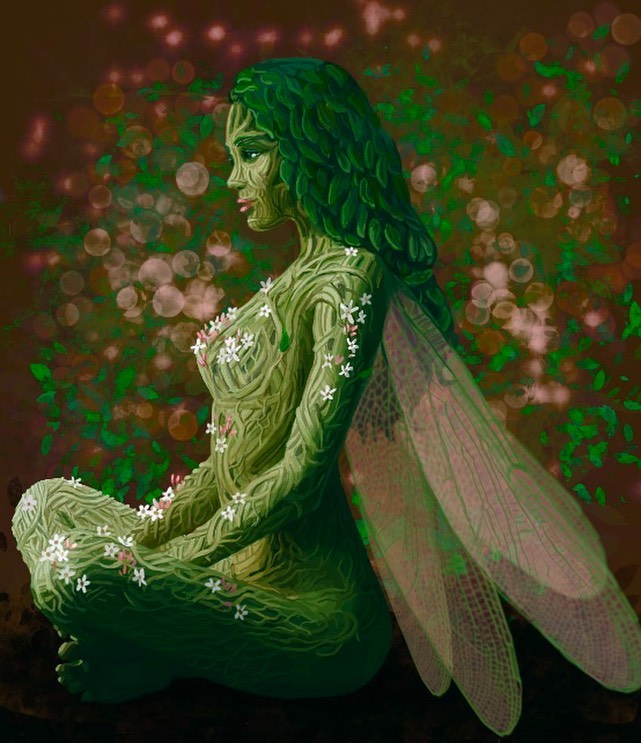

RuneQuest Glorantha Buyer’s Guide
This is a guest segment by Joerg, lightly edited by Ludo. Thanks Joerg!
Joerg here: Justin has been producing videos on a variety of game systems on his Books, Bricks and Boards channel for nearly two years now, discussing the strengths and weaknesses of various game systems, with several honourable mentions of RuneQuest in previous videos, e.g, as one of five highly recommended alternatives to D&D already before the OGL 1.1 fiasco that he refers to in the tail end of this video.
Justin gives solid advice about how to approach the RuneQuest rules when you are a new GM (or ambitious player) and you want to slide into running the game. He gives short unboxing-style reviews of the components of the Starter Set before presenting the Core Rules, the Bestiary, the GM screen pack and the rest of the official RQG line.
The one point where I would disagree is regarding the Sourcebook as “the icing of the cake” rather than presenting it as the currently best vehicle to get an insight on the setting beyond the short takes in the Starter Set and the Core Rules, but then I am here for the setting details.
If you are following the God Learners and haven’t started acquiring RuneQuest books yet, this list should set you up. Same if you are asked by newcomers where to start. It will be interesting to see a re-evaluation of the series when the Cults Books of 2023 will be available.
Runeblogger Reviews Hero Wars in the East Isles
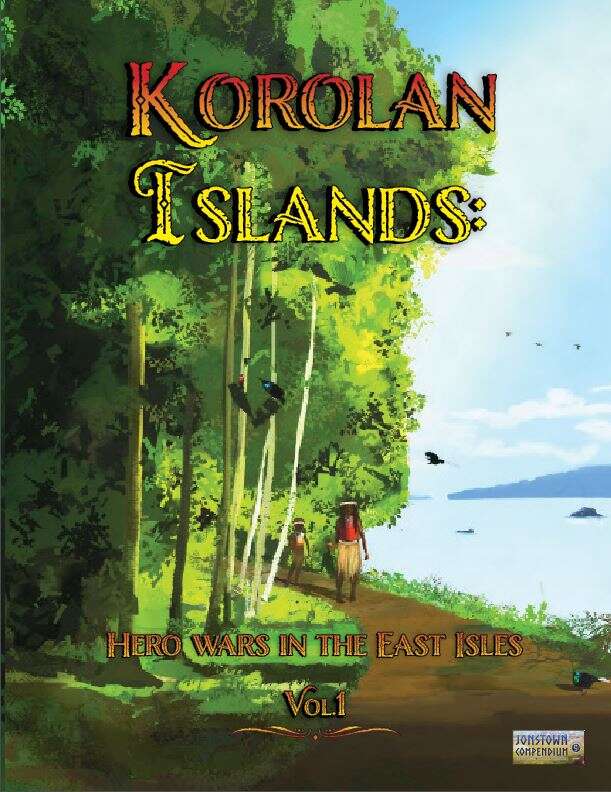

Somehow I missed some of Runeblogger’s latest articles, which includes a thorough review of both volumes of “Hero Wars in the East Isles” (Volume 1 is “Korolan Islands” and Volume 2 is “Fires of Mingai“).
The review for Volume 1 is here, and it gives you a good idea of what you’ll find in there, since Runeblogger goes in detail into each section of the book. Runeblogger liked in particular the cult write-ups for the island gods, along with some local myths about them. There’s also a good summary of the mysticism and martial arts rules that can be found in Korolan Islands. This might be of interest to some of you out there…
The review for Volume 2 is here, and it follows the same formula as the first review. If you’re sensitive about spoilers, watch out for the overview of the four scenarios found in Fires of Mingai. They’re pretty short and high level, though, so it will be OK in most cases, especially if you’re the GM, obviously.
If you want to check out more stuff from Runeblogger, you can hit the Translate button on this article (unless you can understand Spanish of course). It describes a “simple heroquest” called “The River Ritual” and how Runeblogger ran it using RuneQuest!
All the Spanish RuneQuest
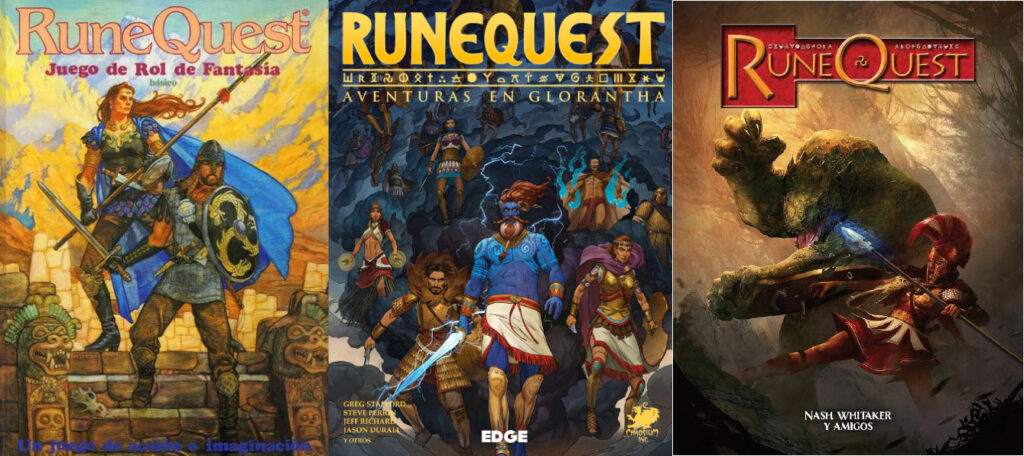
Do you want more Spanish blogging? This “Role of the 90s” blog, also easily translatable to English thanks to the toolbar at the top, goes over all the Spanish editions of RuneQuest, from 1988 to the present day.
It starts with some pretty straightforward translations but you may want to fast-forward to the early 1990s, with the covers of “The Abyss of the Serpent’s Throat” and “Ancient Secrets of Glorantha”. Or maybe not. Once you have seen it, you can’t unsee it.
Elsewhere on Arachne Solara’s Web
Not everything is about Glorantha, although most things are! Here are loosely relevant things that we found on the interwebs.
The Dalyan Rock Tombs
Lycia was an Anatolian state that existed from sometime in the 15th or 14th century BCE. You might see a lot of references to Anatolia when it comes to Bronze Age history but to make things simpler, you can almost always substitute Anatolia for Turkey (the country, not the animal… unless you’re a trickster, in which case that might work)
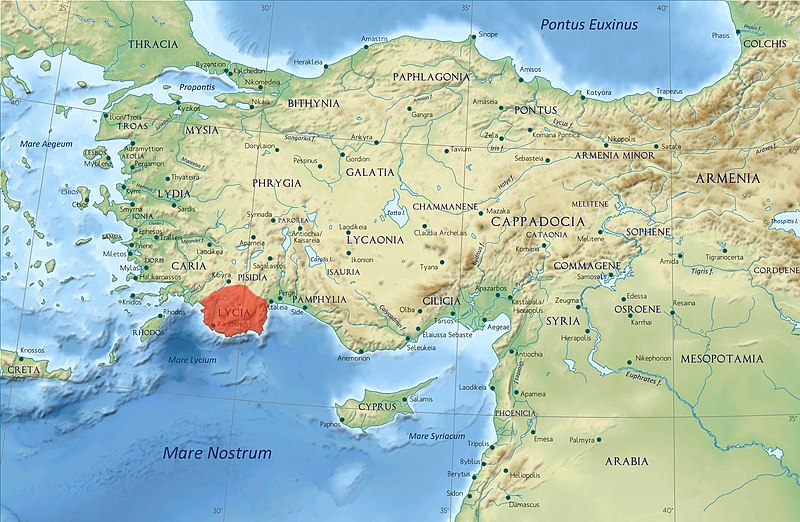
Lycia lasted until the mid 6th century BCE when it was absorbed into the Persian Achaemenid Empire. And then Alexander the Great conquered that (around the 4th century BCE), but after his death the whole thing broke apart. As far as I can tell, Lycia was sort of part of the Ptolemaic Kingdom, but on the edge of the Seleucid Empire (those two being empires controlled by old buddies of Alexander who couldn’t get along… it’s a bit messy) I guess it might have moved hands many more times during this period, actually.
Anyway, the point is that Lycia was under Hellenistic influence, one way or another, around that time. And that’s why we find some cool sort-of-Classical-Greek-looking things in the area! The city of Kaunos, founded in the 10th century BCE, well before the Hellenistic era, gained many Greek landmarks over time such as an amphitheatre, an acropolis, and lots of columns.
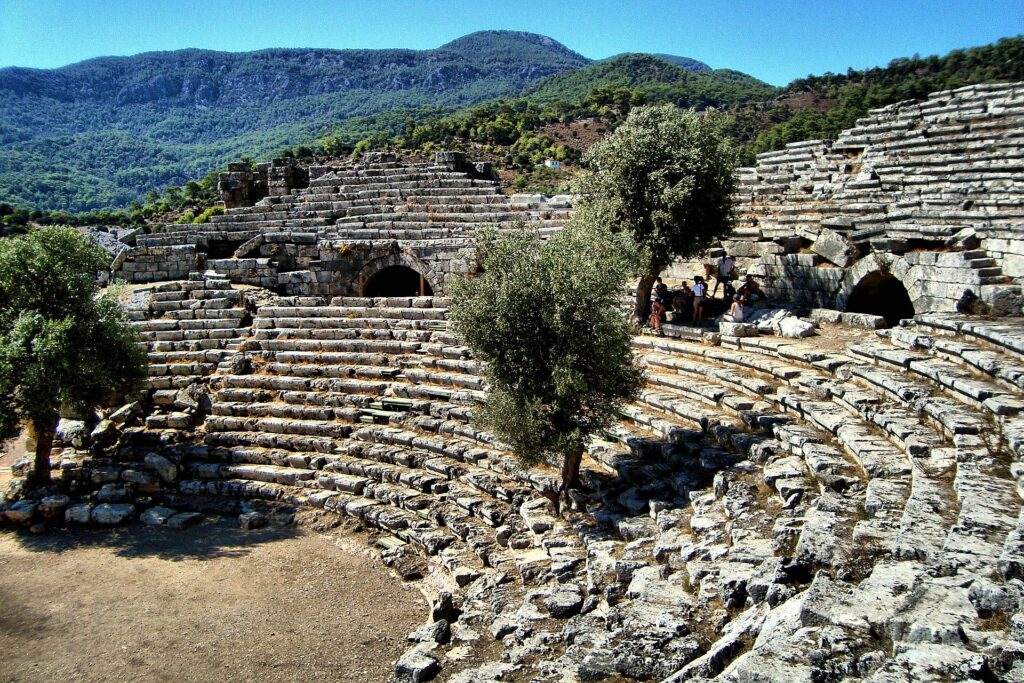
One of the region’s most striking monuments are the rock-cut tombs near the modern town of Dalyan. They are surprisingly well preserved compared to other similar tombs I’ve seen online:
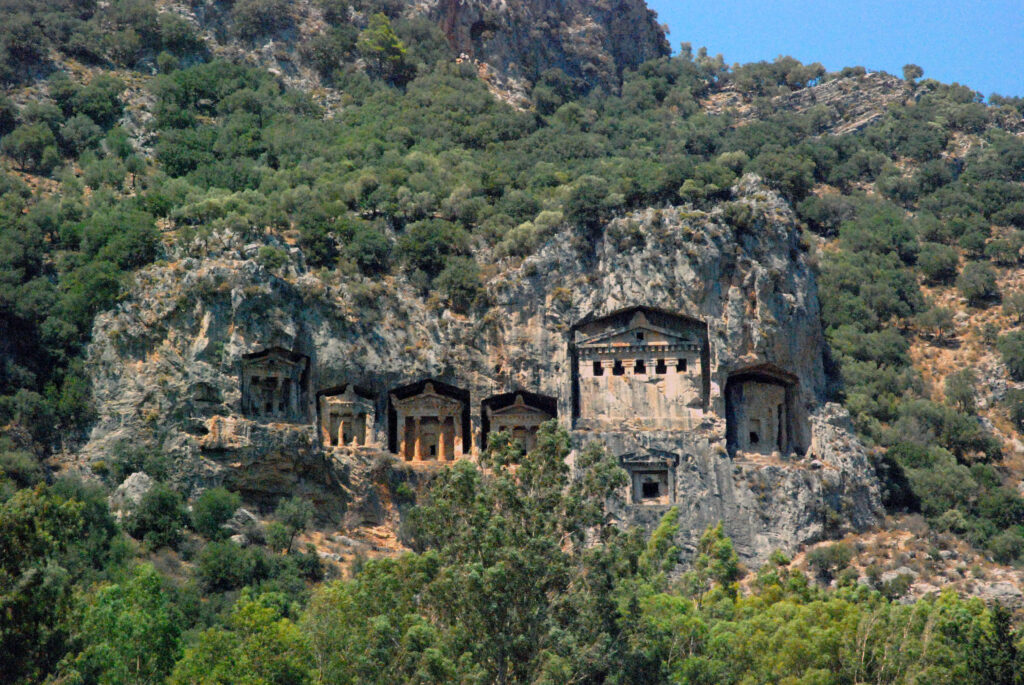
I can’t easily find some solid historical information about these tombs, but the Daylan tourism site implies that they date back to the 9th century BCE. That seems too early for this Hellenistic-looking (to me) site, so I’m going to call bullshit. Most likely these tombs were built around the same time the nearby Kaunos was transformed into a Greek-looking city (4th or 3rd century BCE?) But maybe these facades were simply built in front of older burial chambers?
I don’t know, people, I’m just a guy… Listen, these tombs look great, and we should all figure ways to put rock-cut tombs in our games, deal? Think about what might lie deep inside these chambers!
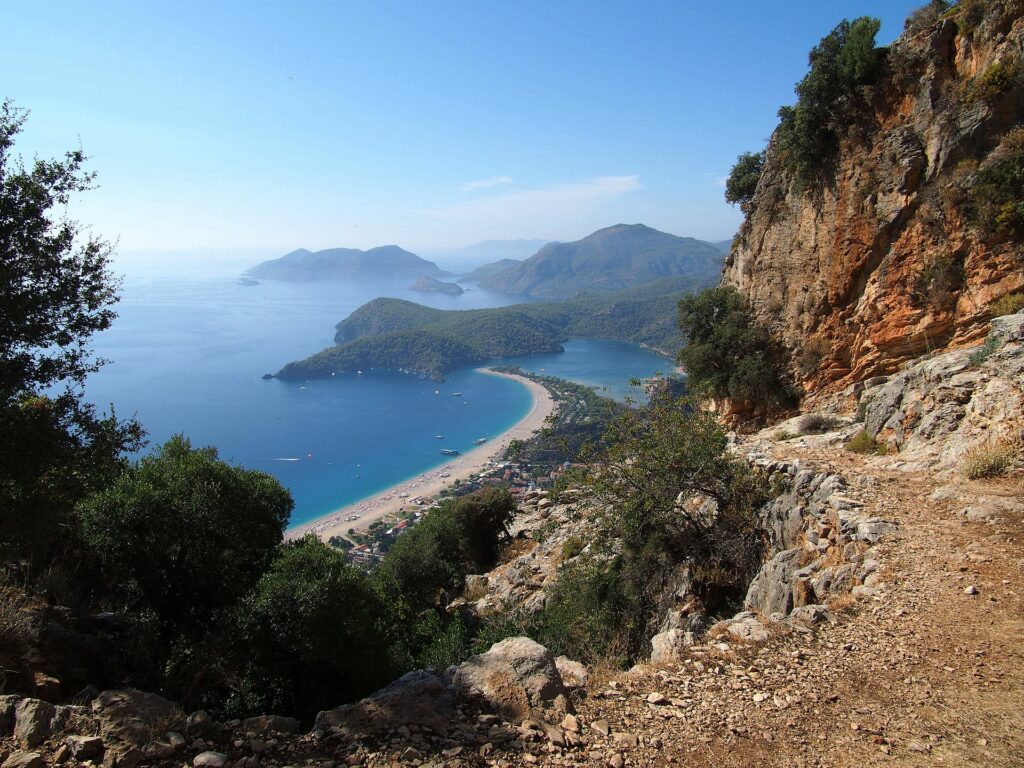

If you go to southwestern Turkey for your next vacation, make sure to hike parts of the Lycian Way, which looks gorgeous and actually passes near Kaunos.
Thank you for reading
That’s it for this week! Please contact us with any feedback, question, or news item we’ve missed!


